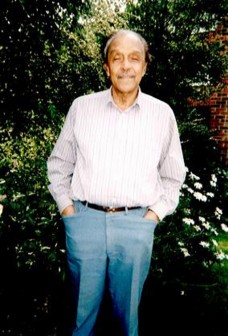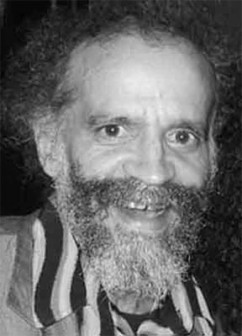Last week we attempted a broad overview of the African presence in Guyanese culture; the nature of it, the way it manifests itself and its considerable influence on the national culture and social structure. Integrated with the social institutions that evolved in the country after Emancipation is a complex fabric of the performing arts and theatrical traditions, including rituals, visual arts, oral and scribal literature through which and within which the Guyanese African culture is reflected. But this African presence is now virtually indivisible from the general Guyanese culture.
The focus this time will be on literature, but it is difficult to approach it without placing it in the context of the African presence in the culture. Our account last week touched on social factors and national cultural heritage including language, food, clothing, religion, and elements of the African ethos that survived slavery and are a part of the fabric of contemporary social culture or evolved into local Guyanese phenomena. These include the spirit or the expression of sexuality, rivalry, kinship and spirituality, as well as rites of passage and the function of many of the traditions as means of social control.
 Mention was made of such traditions as proverbs, folk tales, folk songs, rituals, Anansi, nansi tori and kwe kwe without too much detail. Very little was said about other related africanisms in other traditions such as the maskarade (masquerade), dance (ie, African traditional, music including drums, the carnivalesque, folklore and myth. All of these may be properly explored in another study as their importance and very interesting characteristics are matched by their complexity.
Mention was made of such traditions as proverbs, folk tales, folk songs, rituals, Anansi, nansi tori and kwe kwe without too much detail. Very little was said about other related africanisms in other traditions such as the maskarade (masquerade), dance (ie, African traditional, music including drums, the carnivalesque, folklore and myth. All of these may be properly explored in another study as their importance and very interesting characteristics are matched by their complexity.
In approaching the literature it is useful to get there through the visual arts because of the similarities regarding their place in Guyanese African culture. There are true and important surviving traditions of ancient Amerindian art in Guyana, such as the timehri, petroglyphs, artifacts and motifs. Then there is the influence that these have had on contemporary art as in the use of motifs by Stephanie Correia and the deeper possession of both motifs and the Amerindian ethos by Aubrey Williams, George Simon and Oswald Hussein.

Where African art is concerned, nothing has survived to match the Amerindian examples. There are some imitators who try to reproduce what they might have seen or their perception of African motifs, but there are others whose Africanness is profound and better studied or arise from deep spiritual involvement. Doris Rogers, Emeritus Professor of the University of Guyana fortified her interest as an Africanist by many years in Nigeria’s Rivers State Region with resulting influences of the Fulani and other forms in her painting. But the best example is the work of Philip Moore whose African spiritual immersion is greater and more authentic than any other Guyanese artist. He is a spiritualist who produces art because he accepted an instrument for carving offered to him by divine hands. Both his sculpture and painting are serious African art in form and intuitive approach.

The literature is vast. First there are pre-emancipation survivals and literary evolutions. The Guyanese oral literature includes forms that date back to African slavery, including some whose antece-dents are known in West Africa. Others evolved in Guyana after emancipation to create creole forms, while others have different origins but reflect an African world view. Proverbs have been common currency in Guyanese communication in village life and at other social levels. Folk songs have still managed to survive, although folk tales have struggled and have become marginal. One part of the corpus of Guyanese oral literature that has fared much worse than the folktales is the maskarade toast. These four line verses of iambic metre have completely faded from the relics of maskarade that exist, and these are only really to be found on the Essequibo Coast. Nansi Tori is a rapidly disappearing speech act, while kwe kwe songs and the myth of Anansi still persist. An interesting twentieth century development are the stories and legends out of the emerging mythology and folklore of the pork knockers.
The fiction, poetry and drama of a scribal nature are equally rich, although it is only with care that one may extract from it something called African Guyanese literature. That is more easily done when the oral literature is included. This is so because the Africanisms, the reflection of African culture in the writing have generally mixed themselves with the literature with little regard for ethnicity.
Novelist Angus Richmond treats the characters of the ghetto or the ‘nigger yard’ in proletarian Georgetown, reflecting the rhythms of life in that ethnic sector inhabited by the children of emancipation. Wordsworth McAndrew draws on folklore and myth in a poem that dramatises the supernatural creature known as Ol Higue, while dramatist and novelist Harold Bascom crosses a few boundaries. His play Makantali further immortalises the legendary characters whose courageous but controversial pushing forth of dangerous frontiers on their own quest for El Dorado in Guyana’s interior both created and became the subject of myth and oral literature. Another of his plays Two Wrongs ventures more boldly than others before him into the murderous inter-racial violence in Guyana of the 1960s, while his novel Apata reveals a racial tension out of which the African descendants seem always to emerge as tragic victims.
Fred D’Aguiar, through both fiction and poetry, goes right to history and slavery to analyse the root of contemporary problems, but it is in the novel Dear Future that he interrogates a Guyanese situation with racial and political dimensions. It is a political satire which accuses the Burnham era but with a moving tragic account of race and conflicts that wipe out a future. An investigation of the African ethos in Guyanese literature, however, will find great rewards in a study of John Agard’s poetry in Weblines. It is a risk-taking satirical work which confuses the emerging web technology with the web lines of Anansi the spider. The protean folk hero who is either man or spider when it best suits him, provides Agard with both subject and form. His language takes advantage of the Anansi prototype, the rural setting among villagers of African descent and the Caribbean story-telling tradition.
But one of the most startling examples of the African presence in Guyanese literature comes from what might appear to be unlikely quarters. David Dabydeen from the other side of Guyana’s destructive ethnic divide, produces Slave Song, a sequence of monologues and narratives from the consciousness of the enslaved African in his racially and socially warlike plantation setting. Dabydeen captures his mindset, his psychology and his power politics. It is the voice of enslaved Africans, bold and uncensored, if not entirely liberating or progressive. Another important feature of this work is that it is written in the Guyanese Creole language of its protagonists. Neither did it come from “unlikely quarters” since Dabydeen has made thorough research of Black history and slavery, and has produced other work on the black experience. There are minor elements in the novel The Counting House, and while Slave Song won the Commonwealth Prize, it is far from Dabydeen’s best poetry or best book on the African. For poetry, that best book is Turner, which engages the Middle Passage and was partly inspired by the paintings of the English artist Turner, particularly by his Slave Ship. The long poem Turner is an intoxicating lyrical testament which includes elements of the black experience.
Poet Martin Carter has a consistent underlying proletarian outlook which caries the historical concept in his poetry. This arises from Carter’s consciousness of the weight of history including slavery and its heritage among the black working class inhabitants of a Georgetown influenced by the black experience. The black presence is a part of the contemporary urban condition reflected in Carter’s poetry. While he goes into the ethnic conflicts and writes on the race riots, he explores the state of African descendants in Georgetown in order to ask questions and make statements about a disturbed human condition in work that far transcends its setting.
Yet the most far-reaching possibilities in any treatment of African Guyanese literature is to be found in Wilson Harris. It is more intriguing because it is not direct and will never appear under that ethnic label. Its subtlety is a feature of its high originality and the way it treats the black racial question among its wider universal themes. A wake is described in The Whole Armour. The wake is a tradition in Guyanese culture that has African derivations as a rite of passage which moves the deceased safely into another life while protecting those left behind. It arises from African ancestor worship and the profound use of theatrical ritual. What is not known to most contemporary Guyanese who hold and attend wakes, is that it used to have a spiritual component which included spirit possession. The spirit of the departed was invited to appear at the wake, sometimes possessing one of the celebrants as a part of a purging and a catharsis. That element has dropped out of the Guyanese wake.
Harris, however, uses it in the novel. A wake is held for the hero Christo, who is missing, presumed dead. What is not known is that his mother has hidden him away in a wilderness and pretends that she believes he is dead in order to keep him out of a piece of urgent trouble. Among the things that happen is his appearance in the form of a tiger (a disguise), but more than that, he spends forty days in hiding during which he undergoes a kind of rebirth. So the hero experiences death and rebirth and the wake serves as a vehicle for that, complete with the concept of possession. Harris’s interest is in the rebirth and he employs both Christian and Amerindian myth within the form of an African ritual. Kanaima in the Amerindian setting is known to take the form of a tiger.
Harris resurrects a faded African tradition in order to treat the ‘resurrection’ of his hero whose name is Christ-like and who spends forty days and nights in a kind of wilderness. That and the wake leave him cleansed. It will also be interesting to contemplate the way Harris uses the African in another book in The Guyana Quartet, the semi-autobiographical novel The Secret Ladder. There are other inclusions of African characters, but the Poseidon figure in the story is linked to the invasion of ancestral lands and a surveyor’s excursion into territory that bears a resemblance to invasion and dispossession.
These are a few examples of the many ways in which Guyanese literature interrogates the African presence in what may be termed African Guyanese literature.





